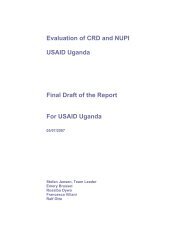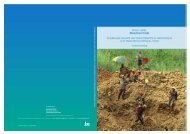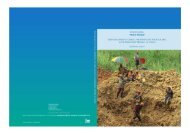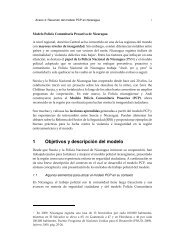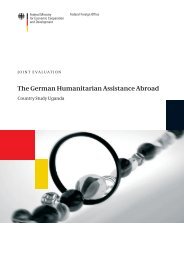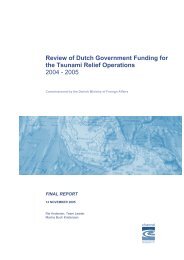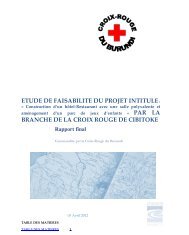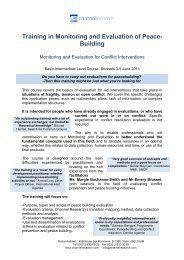A ripple in development? - Channel Research
A ripple in development? - Channel Research
A ripple in development? - Channel Research
You also want an ePaper? Increase the reach of your titles
YUMPU automatically turns print PDFs into web optimized ePapers that Google loves.
sulted communities <strong>in</strong> the east to collect op<strong>in</strong>ions on what people wanted<br />
<strong>in</strong> the recovery plan. This process provided a constructive channel for<br />
sometimes politicised local demands by turn<strong>in</strong>g them <strong>in</strong>to concrete plan<br />
elements. RADA of Government of Sri Lanka made similar efforts to<br />
br<strong>in</strong>g recovery closer to communities.<br />
In Maldives on the other hand, capacity <strong>development</strong> strategies<br />
have mostly focused on the national level and so far rema<strong>in</strong> highly centralised.<br />
Atoll and island leaders are selected by the centre <strong>in</strong>stead of<br />
elected locally. Although a range of community organisations exist, very<br />
few have sufficient national reach to promote DRR across atolls or with<br />
the central government 90 . At the local level, a fair amount of awareness<br />
is raised and key atolls have developed preparedness plans, though yet<br />
to be made available <strong>in</strong> the public doma<strong>in</strong>, but susta<strong>in</strong>able community<br />
actions for preparedness that are <strong>in</strong>dependent of outside fund<strong>in</strong>g are<br />
less common. A focus, by <strong>in</strong>ternational actors on the capacities of local<br />
structures grew only after the <strong>in</strong>itial response 91 <strong>in</strong> 2005.<br />
In Indonesia, implementation of capacity <strong>development</strong> strategies<br />
rema<strong>in</strong>s <strong>in</strong> the <strong>in</strong>itial stages. The Indonesian Red Cross found that<br />
implementation of activities under the banner of “capacity <strong>development</strong>”<br />
is often more focused on service delivery than long-term capacity<br />
<strong>development</strong>. Inputs of capital and tra<strong>in</strong><strong>in</strong>g have been provided. For<br />
example, accord<strong>in</strong>g to the Revised Plan and Budget the Indonesian Red<br />
Cross has <strong>in</strong>stalled emergency kits for families <strong>in</strong> 21 branches. Yet, it is<br />
not yet clear whether local capacity has been supported to determ<strong>in</strong>e<br />
this need and procure these kits locally. Radio equipment has been<br />
<strong>in</strong>stalled <strong>in</strong> each branch for early warn<strong>in</strong>g dissem<strong>in</strong>ation. The IFRC is<br />
also provid<strong>in</strong>g tra<strong>in</strong><strong>in</strong>g to branch volunteers and staff but with little<br />
reference to how these capabilities will be ma<strong>in</strong>ta<strong>in</strong>ed.<br />
6.3 International alignment around capacity build<strong>in</strong>g priorities<br />
The case studies found that the capacity build<strong>in</strong>g efforts of foreign<br />
organisations reflected the assumption that the agencies had the capacity<br />
to carry out the deed. This was often not the case <strong>in</strong> unfamiliar territory<br />
with new partners. In disaster recovery this notion of capacity is<br />
<strong>in</strong>creas<strong>in</strong>gly def<strong>in</strong>ed <strong>in</strong> sectoral terms (especially with the adoption of<br />
the so-called Cluster Approach). These sectors do not reflect the way<br />
local recovery takes place and are difficult for local partners to follow,<br />
especially for civil society as recovery is hardly ever so clearly and orderly<br />
organised. The assumptions about long term <strong>in</strong>tegration are often questioned<br />
by the government, NGOs, and local communities 92 .<br />
90<br />
Patel and Lawry-White (2006)<br />
91<br />
Patel and Lawry-White (2006)<br />
92<br />
In particular, see ALNAP Annual Review (2004)<br />
101




